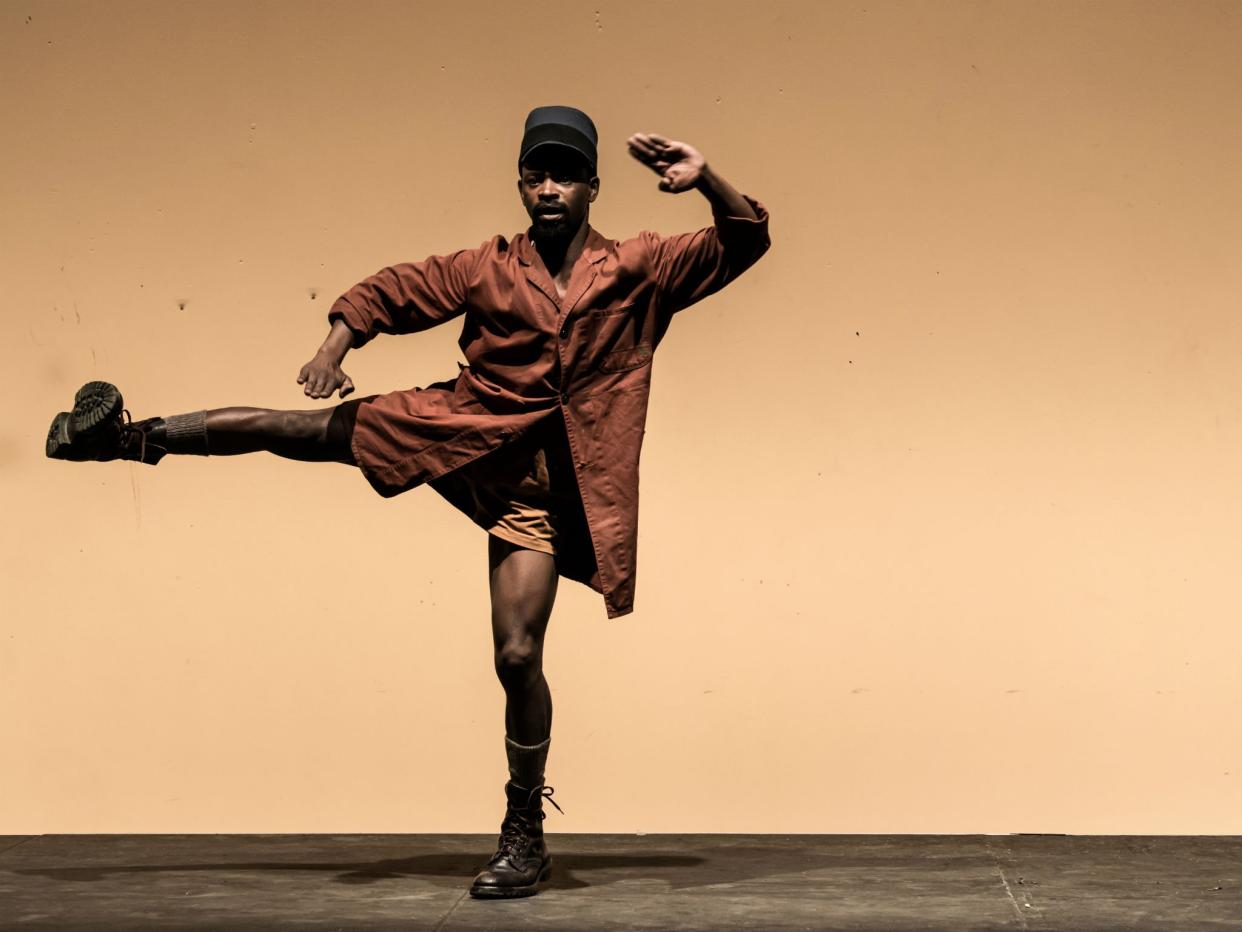The Head & the Load, Tate Modern, London, review: William Kentridge’s piece about Africans in WWI is electrifying

Sculpture, song, shadow play: William Kentridge’s performance work about Africans in the First World War is an electrifying collage of imagery and ideas. Remembering those whose deaths were often left unrecorded, it finds its own rich language for incomprehension, its own ways of visualising those who were unseen.
More than two million Africans served in the war, over 1.5 million as porters and carriers for the British, French and German forces. The load is at the heart of this performance, co-commissioned by 14–18 NOW and staged in on a wide platform in Tate Modern’s Turbine Hall. Performers carry delicate sculptures, sometimes as headdresses, depicting weapons, baggage, planes and ships, alongside portraits of the leaders of colonial resistance.
Striking in themselves, the loads cast intricate shadows on the backdrop, overlapping with the video design by Catherine Meyburgh, Janus Fouché and Žana Marović – which includes filmed shadows, the processions multiplied and echoed.
Similarly, Kentridge and his composers Philip Miller and Thuthuka Sibisi layer voices. The first thing we hear is a woman singing like a siren, the boundary blurred between human and machine. We also hear multiple languages, European and African, subtitles projected onto pages from colonial account books alongside drawings of mosquitos and archive film.
Opening with “manifestos” – for war, for independence, for colonialism – Kentridge also draws in the explosion of art movements on this period. Telegraph codes sit alongside the nonsense languages of Dadaism.
There is nothing flat or easy in these comparisons. Each voice is full of its own contradictions, performed with full-bodied energy. Mncedisi Shabangu has sharp conviction as anti-war campaigner John Chilembwe; Luc De Wit and Joanna Dudley bring pointed, eccentric force to the “French” and “German” voices, with Dudley trilling into screeches and squeals, baffling calls to arms. The lack of a “British” voice feels like an omission here, an open goal ignored.
Grace Magubane leads a spinechilling choral account of “God Save the King”, African voices expressing a patriotism that splinters into silence. Musicians emerge from boxes, joining processions or vanishing into darkness. In Gregory Maqoma’s vivid choreography, dancers cast pointed shadows over conflict maps. Sipho Seroto haunts the performance, a gasmasked figure.
The Head and the Load is superbly orchestrated. Holding multiple elements in play, Kentridge and his collaborators open out the complexities of each situation while driving the performance forward. It ends with a double resolution: images of African independence, and of the fragmented names of the dead.
Until 15 July (tate.org.uk)


